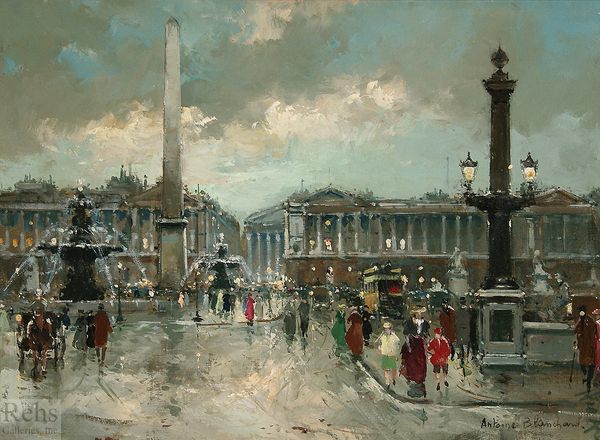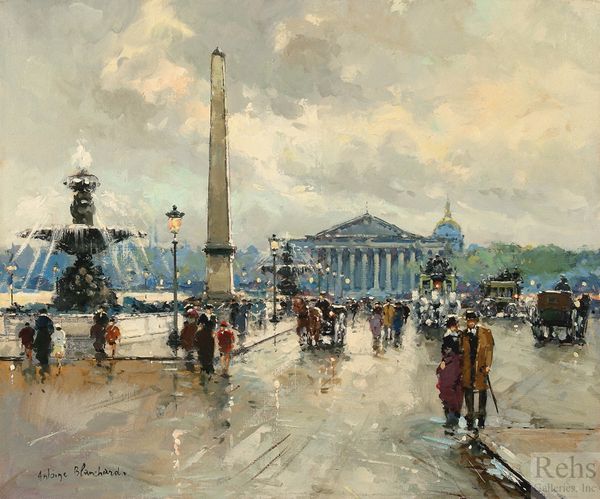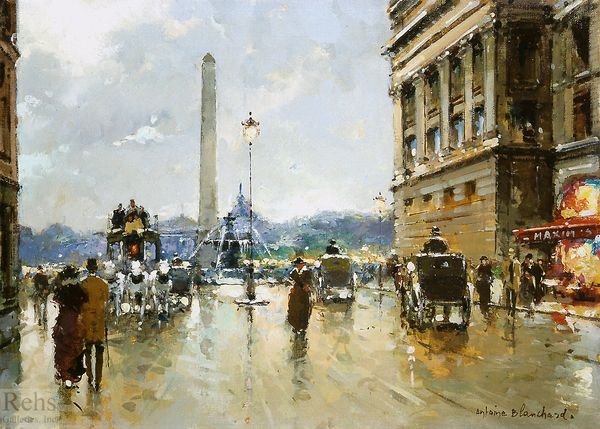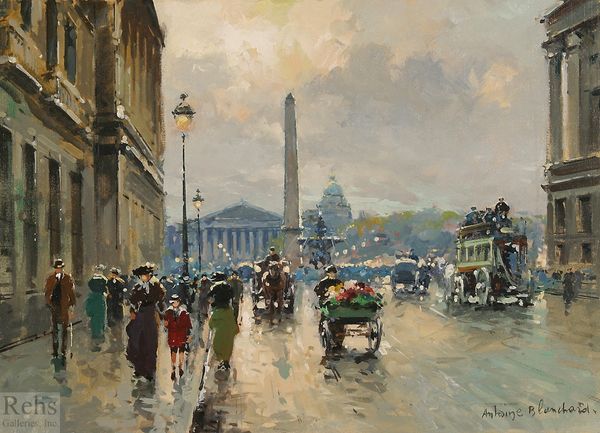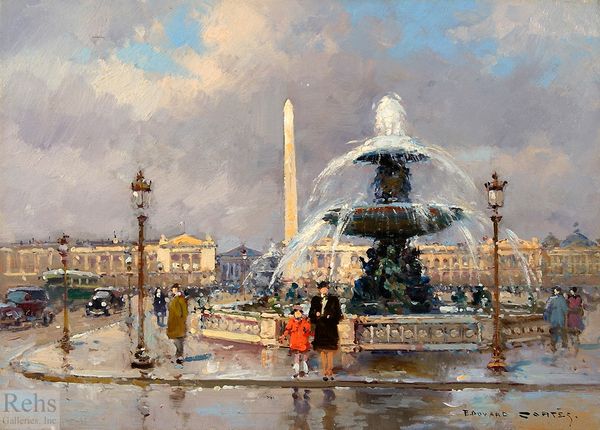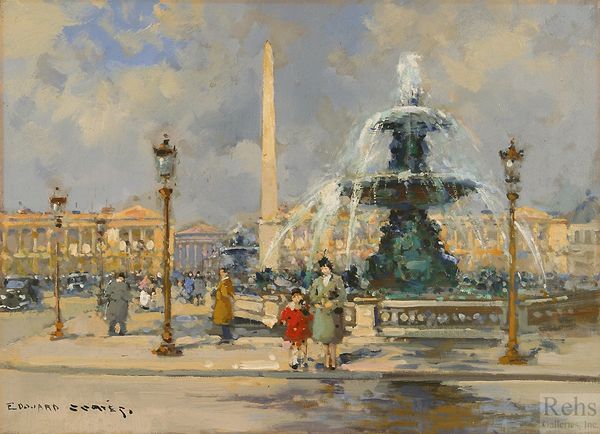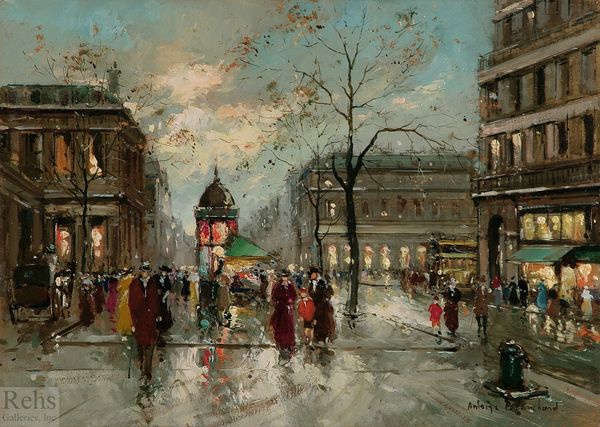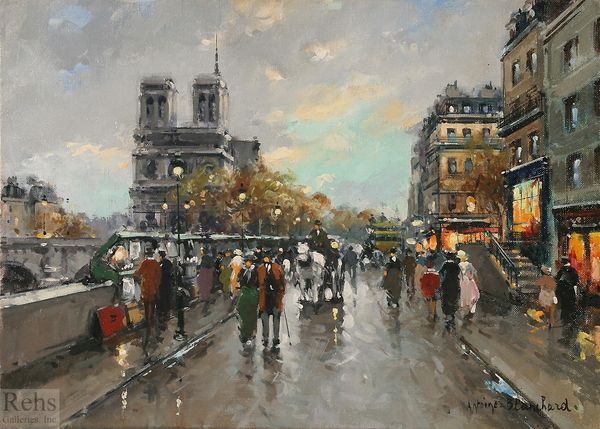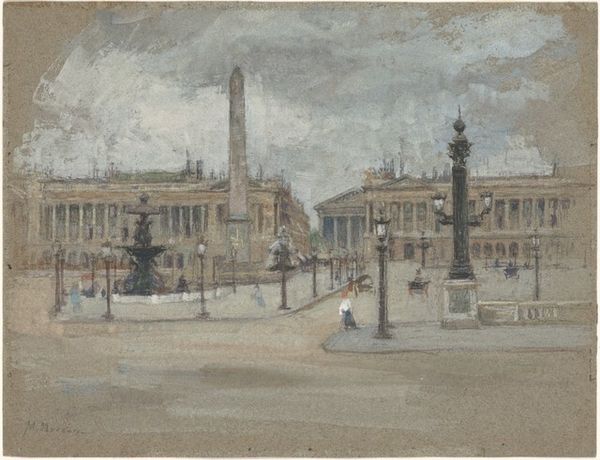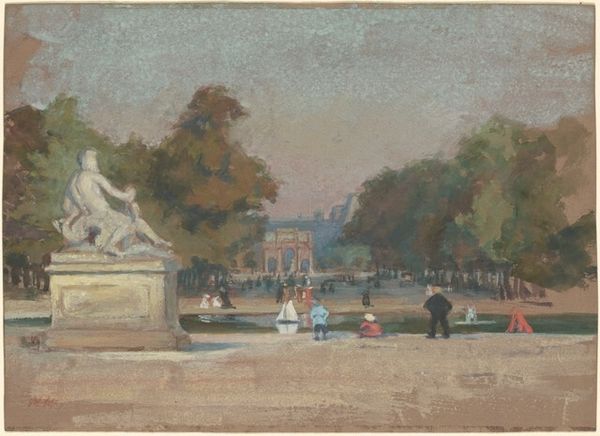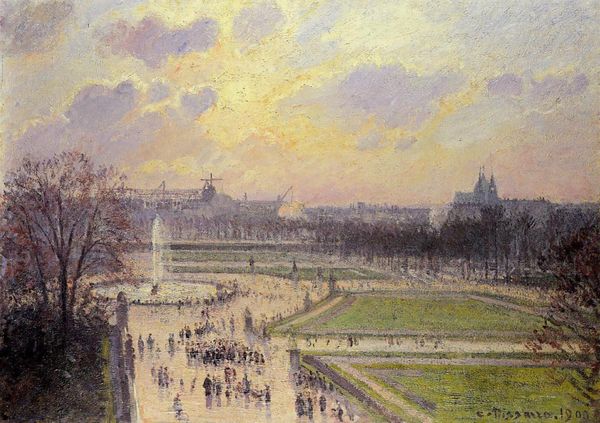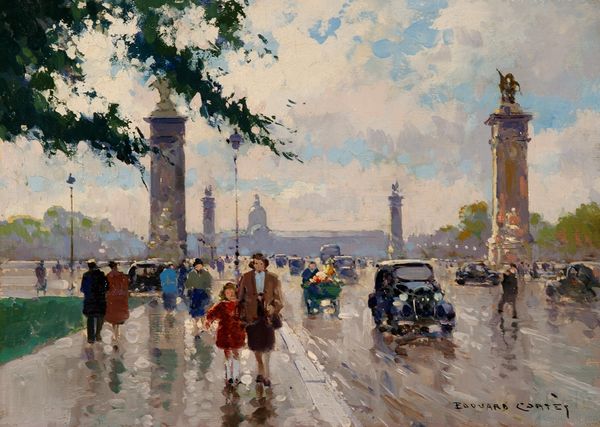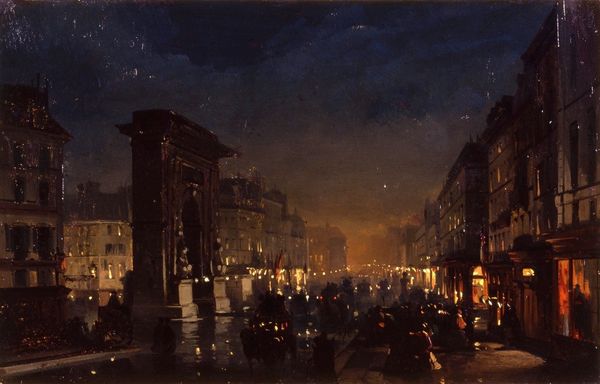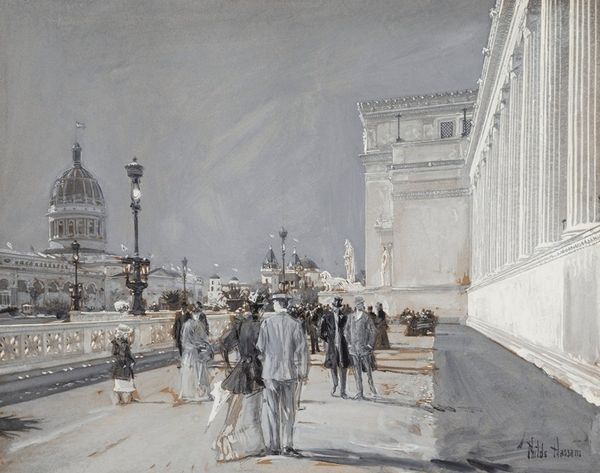
painting, oil-paint
#
portrait
#
urban landscape
#
painting
#
impressionism
#
oil-paint
#
vehicle
#
landscape
#
figuration
#
oil painting
#
road
#
square
#
cityscape
#
genre-painting
#
street
#
modernism
#
building
Copyright: Antoine Blanchard,Fair Use
Curator: Antoine Blanchard’s “Place de la Concorde” captures a bustling Parisian scene. It offers a glimpse into city life through the artist’s modern impressionistic style. What are your initial thoughts? Editor: There’s a somber beauty to it, don't you think? The gray, muted tones almost conceal the life teeming within the square, dampening the vibrancy often associated with Parisian cityscapes. It really evokes a certain material reality. Curator: That's an interesting observation. Blanchard, while reminiscent of Impressionism, was indeed drawn to the ordinary. His depiction of urban life often involved capturing a specific class dimension; focusing here, perhaps, on the everyday encounters of Parisians amidst grand historical monuments and considering those intersections. Editor: Absolutely. And look at the brushstrokes. They’re thick and layered, which highlights the physicality of the paint and makes me think about the very labor involved in creating the piece. The blurred lines almost invite us to question the way urban progress obscures individual lived realities and historical traumas within urban environments. Curator: The placement of the Obelisk and the architecture in the background is interesting in how it centralizes imperial power structures in the middle of this scene. In my perspective, the painting can offer a commentary on power, public space, and how social experiences are always against the historical backdrop of the site. The "Place de la Concorde," given its history, cannot escape that weight. Editor: That's right! Plus, that layering effect creates almost a fog of historical perspective, as it gives the sense of people trudging through this very physical and also symbolic space in ways that cannot ever fully divorce the two. This way of using the materiality of the painting really reflects material conditions in the square itself. Curator: Overall, this invites us to look beyond the surface of a city scene, towards the histories, labor, and socio-political factors. It challenges our perspective of grand boulevards and monumental sites to also question our present role within that landscape. Editor: Definitely. I walk away seeing this work as a testament to the city's ability to be reshaped and reinterpreted through labor and social movements. It highlights, in pigment, the dynamic dance between matter, action, and place.
Comments
No comments
Be the first to comment and join the conversation on the ultimate creative platform.
